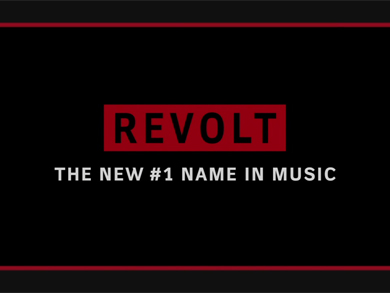Family, friends, and fellow students of Elizabeth Seeberg are outraged at Notre Dame University because after months of Elizabeth’s suicide following her rape by a football player, the school has yet to publicy identify or take any action against him. Read the full story after the jump…
@funkmasterflex
Elizabeth “Lizzy” Seeberg was a college freshman with a wide-open smile – here is a heartbreaking photo of her in spaghetti straps and pearls – who built houses with Habitat for Humanity and hoped to become a nurse. Lizzy also suffered from depression, and 10 days after telling friends and campus cops that she’d been sexually assaulted by a University of Notre Dame football player, rape crisis volunteers who knew she had missed a counseling session found her barely breathing in her dorm room.
The 19-year-old daughter of serious Catholics and prominent volunteers in the Chicago suburb of Northbrook died on Sept. 10, of what turned out to be a lethal dose of the anti-depressant Effexor. And the football player, who hasn’t been named? He is not only still in school, but wasn’t even benched, according to the Chicago Tribune, and presumably will take the field against University of Southern California on Saturday, with my whole ND-adoring family in attendance. I love my alma mater, (really, I do) but the thought that I might be cheering for Lizzy’s attacker makes me want to shake down more than some thunder.
Not long after the semester began, on the evening of Aug. 31, Seeberg told her friends at St. Mary’s College, the all-women’s school across the road from Notre Dame, that she had been assaulted but not raped in an attack that was interrupted by a knock on a dorm-room door. That same night, she sat down and hand-wrote an account of all that had happened, and the next day made a full report to the Notre Dame cops. She also sought treatment at a hospital, where she submitted to DNA testing and accepted an offer of counseling.
There have been conflicting reports about whether Notre Dame ever reported her allegations to the county cops who were supposed to be investigating her death. And lucky Notre Dame, from the sound of it, that any crimes committed on the campus are handled not by the South Bend Police Department, but by St. Joseph’s County. I say this because county officials at first said the school hadn’t informed them of Seeberg’s allegations at all. Then, after her death became national news, they changed their story and said their lead investigator had gotten such a call “a couple days” after being assigned to the case, but had disregarded the information because “he just didn’t feel it was important.”
Lizzy Seeberg’s family, naturally, feels otherwise, and has hired former federal prosecutor Zachary Fardon, who is best known as the guy who took down former Illinois Gov. George Ryan for corruption. Lawyered-up school officials, meanwhile, continue to claim it would be a violation of federal law for them to answer any questions about their handling of either her allegations or her apparent suicide. The Tribune has also reported that ND’s new football coach, Brian Kelly, cracked wise when repeatedly asked about the matter during a conference call with sportswriters.
You would think that the sass would already have been knocked out of Kelly by the October death of team videographer Declan Sullivan, a 20-year-old killed during a practice when the scissor lift he was perched on fell over in a windstorm, raising questions about whether ND’s athletic department has sense enough to put student safety first.
Yet he managed to come off as cavalier about a vulnerable young woman who had begun a school year that was already a do-over for her — she’d left the University of Dayton after a single semester in ’09 — with high hopes. She “was so excited and so enthusiastic about starting the year off right,” a high school friend told the Tribune. “She had a whole plan about what she was going to be.”
After reporting that she’d been attacked, though, the newspaper said, Lizzy “suddenly felt self-conscious” and “feared people would dislike her for accusing a Notre Dame athlete of a sex crime.” So, four days after filling out a police report, she pulled on a green Notre Dame T-shirt, applied a fake “ND” tattoo to her cheek, and in search of “normalcy,” went with friends to a tailgate party to celebrate the first football game of the season.
Though it’s true that the football player whose yearbook photo she pointed out to campus cops hasn’t been charged, he also hasn’t been cleared, and the idea that officials could have conducted anything approaching a thorough investigation in the three days between her report and that first game is absurd. Asking fans to cheer for the team knowing that one of its members has been accused of such a thing is not completely unlike asking that Texas cheerleader to applaud her own rapist.
Do school officials really believe its stonewalling communicates to male and female students that such allegations are taken seriously, or that young women are valued on a par with football players? And what did St. Mary’s College President Carol Ann Mooney mean, in her e-mail to students, when she said that while the concern of students in response to the initial Tribune story highlights “what we all know is special about Saint Mary’s, our unique sense of community…I realize this story will reawaken painful memories.” (Was she saying that it was the story that was the real trouble, rather than the troubling events it reported? And could the death of a fellow student on a tiny campus only a couple of months ago have been far from the community’s thoughts even before the Tribune’s reports?)
The whole problem with having a team you root for, whether in sports or in politics, is that unless you are fan enough to believe that only the guys on the other side could ever do anything wrong, your own team will at some point behave in a way that does not exactly make you feel like cheering. But it’s what happens then that defines us. And if the school does have information that would exonerate the player, and thus the whole team, this would be an excellent time to produce it.













